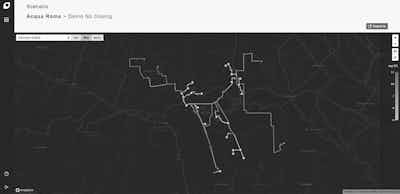Water conservation plays a major role in the performance and goals of water utilities and the communities they serve. Reduced consumption results in less demand on water resources, which are either consistently shrinking or have larger variability than previous years that put constraints on consistent delivery.
An often-forgotten new challenge that results from conservation is a reduction in the quantity of wastewater resulting in a concentrated lower volume higher concentration effluent. This change leads to an environment for increased corrosion and odour issues in the sewer network.
Prolonged periods of drought can exacerbate this condition driving increased concentrations of methane and hydrogen sulphide. This leads to an unwanted contribution to greenhouse gas emissions, reduced customer satisfaction as odour incidents increase, and corrosion failures requiring costly and unbudgeted asset replacement and disruptions to service.

These issues mean that water service providers are continually seeking solutions that will optimize sewer networks, provide increased opportunities for wastewater recovery and reuse and prepare the entire network to deal with such variations in flow.
Addressing the odour and corrosion challenges faced sewer networks caused by low flows
Sewer networks include many miles of sewer pipes and topographical elements, such as rising mains, gravity mains, pumping stations and access points. Constant inspection of all these structures to identify corrosion issues is practically difficult, costly and time-consuming, making modelling a more efficient and effective alternative.
Traditional methods to overcome these challenges are slow and heavily reliant on subject matter experts. Frequently based on static models using network averages, such methods risk missing developing corrosion issues and consequent odour and safety risks. Odour monitoring systems locate odours and manage customer complaints, but such processes take place after the incident has already happened and usually take substantial time and expense to investigate.
Science-based digital technology enabling quick, evidence-based decision making
In response to these challenges, researchers at the University of Queensland’s Advanced Water Management Centre (AWMC), supported by many major Australian water utilities, began working on a tool (SeweX) to represent the physical, chemical and biological processes in sewers with the objective of predicting corrosion and odour hot-spots and compare options for reducing impacts. The University of Queensland recognized the value in partnering with Envirosuite to commercialize the underlying algorithms in a solution that could be applied by utilities themselves to support better decision making.
Using sewer network facts, hydraulic data and wastewater characteristics as model inputs, Envirosuite’s SeweX uses predictive modelling to optimize dosing decisions across the entire network that will avoid corrosion and odour issues. Evidence-based decision-making identifies the available solutions and evaluates the options, based on the concentration details of pH, various sulphur and carbon compounds (including H2S and CH4) impacting sewer corrosion rates, the service life of the sewer and a heatmap of the identified hot-spots. All of those result in more accurate representation of risk for capital allocation and a more efficient and effective response to odour complaints.

The City of Kalamazoo, Michigan USA were dealing with an increase in odour complaints and were unable to consistently identify the source of the complaint and the root cause of the increased odour impacts. Traditionally, investigations into the root cause of the sewer odour issues are time-consuming and it is difficult to completely cover the large area of the network. The City was also concerned about undetected issues that may lead to future operational disruption – a critical concern for infrastructure operators and adopted SeweX at two catchments to better manage these issues.
Australia’s largest water utility, Sydney Water was spending over $A 50 million annually managing odour and corrosion in its wastewater system. The SeweX model was used to build, calibrate and scenario test at one of Sydney’s large coastal wastewater treatment plants, Malabar. The model identified up to 50% reduction in chemical dosing requirements while extending the life of the networks by reducing organic loads from trade waste and improving dosing distribution.
Water conservation is critical to ensuring that our future generations have access to clean and safe water supply. Adopting advanced solutions will help wastewater utilities prepare the sewer networks for odour and corrosion challenges related to lower flows while improving water reuse from treatment plants to sewer networks. Additionally, by managing odour and corrosion issues proactively, utilities can achieve their business and strategic objectives, improve customer satisfaction and extend the working life of their assets. With advancements in municipal beneficial reuse, our sewer networks have never transported a more valuable stream so we must ensure consistent and well managed operation now and into the future.
